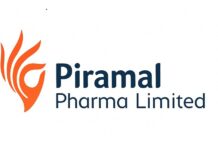Abbott announced results from the Phase 3 ABILITY-2 investigational study of HUMIRA in patients with active peripheral spondyloarthritis (PSpA) who have not been diagnosed with psoriatic arthritis (PsA) or ankylosing spondylitis (AS).
At week 12, nearly twice as many HUMIRA patients compared to those receiving placebo achieved the primary endpoint, defined as at least a 40 percent improvement in the peripheral SpA response criteria (PSpARC 40). These results were presented at the European League Against Rheumatism (EULAR) 2012 Congress in Berlin, Germany.
ABILITY-2 is the first randomized, controlled trial to use the new Assessment of SpondyloArthritis international Society (ASAS) peripheral SpA criteria to enroll PSpA patients – not including patients with PsA or AS – as well as evaluate an anti-tumor necrosis factor medication (anti-TNF) in treating these patients.
PSpA is characterized by peripheral arthritis (asymmetric, lower limb or both), enthesitis (painful inflammation where a tendon or ligament attaches to bone) or dactylitis (a painful and swollen digit), in addition to the presence of other features (family history of SpA, history of inflammation in the eye, past or current history of psoriasis or inflammatory bowel disease).
“ABILITY-2 is a landmark trial which focuses on an important subset of spondyloarthritis patients whose disease often goes unrecognized and inadequately treated because they do not present with a more recognized condition such as psoriatic arthritis or ankylosing spondylitis,” said Philip Mease, M.D., Director of Rheumatology Research, Swedish Medical Center and Clinical Professor, University of Washington School of Medicine, Seattle.
“This data is of significant interest to the rheumatology community, because for the first time we have a Phase 3 study of a biologic in this patient population. This study met its primary endpoint. These results increase our awareness and understanding of HUMIRA as a potential treatment option, and hopefully will spawn more research about this important yet inadequately characterized group of patients.”
In this study, a significantly higher percentage of HUMIRA patients (39.3 percent versus 19.8 percent, P=0.006) achieved the primary endpoint of PSpARC 40 and other endpoints at week 12 – such as the Physicians Global Assessment of Disease Activity (mean change of -27.5 versus -16.4 on 0-100 mm VAS, P=0.003) and Bath Ankylosing Spondylitis Disease Activity Index (mean change of -2.1 versus -1.0, P=0.003) – compared to placebo. Safety analyses for all 165 randomized patients revealed comparable rates between HUMIRA and placebo.
“There are currently few treatment options available to help patients with non-PsA and non-AS peripheral SpA manage their disease,” said John Medich, Ph.D., divisional vice president, clinical development, Immunology, Abbott. “We look forward to additional data from this ongoing study of HUMIRA as a potential option for these patients. Abbott remains committed to its discovery and development program in rheumatology, and we will continue working to advance treatment for a full range of autoimmune diseases.”
Spondyloarthritis (SpA) is a group of diseases that share common clinical, radiographic and genetic features. SpA can be categorized according to which part of the body is mainly affected – axial or peripheral. ASAS developed improved classification criteria for axial and peripheral SpA designed to facilitate identification and classification of people with a SpA who share similar symptoms. Criteria for peripheral SpA are designed to incorporate the group of symptoms that can define peripheral disease, including joint involvement, enthesitis, dactylitis and other hallmark characteristics.
HUMIRA is not approved for the treatment of spondyloarthritides other than ankylosing spondylitis and psoriatic arthritis.
About ABILITY-2
ABILITY-2 is an ongoing, multi-country, Phase 3 study designed to evaluate the efficacy and safety of HUMIRA in patients with non-PsA, non-AS PSpA. The primary endpoint was the proportion of patients achieving PSpARC 40 at week 12: greater than or equal to 40 percent improvement from baseline in Patient Global Assessment of Disease Activity (PGA) and Patient Global Assessment of pain, as well as greater than or equal to 40 percent improvement in one or more of the following: swollen joint count (SJC) and tender joint count (TJC), enthesitis count or dactylitis count.
Eligible patients who fulfilled the ASAS PSpA criteria, did not have a diagnosis of psoriasis, PsA or AS, and had inadequate response to, intolerance or contraindication for nonsteroidal anti-inflammatory drugs (NSAIDs). Patients were randomized 1:1 to HUMIRA (40 mg every other week, n=84) or placebo (n=81) for 12 weeks, followed by a 144-week open-label extension. Baseline demographics and disease characteristics were generally comparable between groups.
Secondary efficacy endpoints evaluated included: the Physician Global Assessment (PhGA), the Bath Ankylosing Spondylitis Disease Activity Index (BASDAI), Health Assessment Questionnaire for Spondyloarthropathy (HAQ-S) and the Medical Outcomes Study Short Form Version 2 physical component summary (SF-36v2 PCS).
About HUMIRA
HUMIRA (adalimumab) is a prescription used to reduce the signs and symptoms of ankylosing spondylitis in adults.
HUMIRA is used alone or with certain other medicines to reduce the signs and symptoms of psoriatic arthritis in adults. It may prevent further damage to bones and joints and may help with the ability to perform daily activities.
About Abbott
Abbott is a global, broad-based health care company devoted to the discovery, development, manufacture and marketing of pharmaceuticals and medical products, including nutritionals, devices and diagnostics. The company employs approximately 91,000 people and markets its products in more than 130 countries.


















